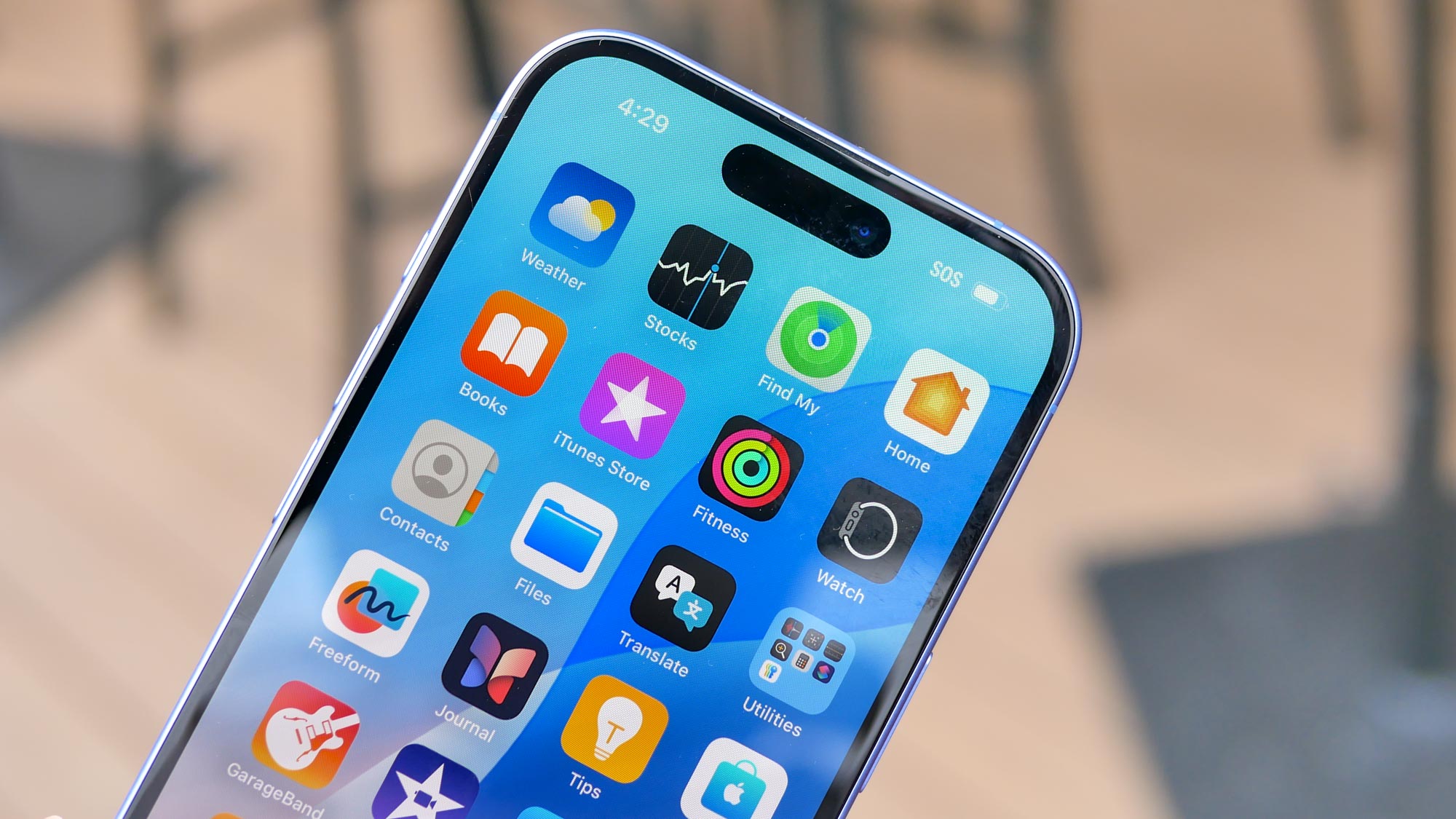I've been using Corsair's HS80 gaming headset for a year — here’s why it’s my everyday choice
12 months in, this Corsair headset is still my daily driver. Here’s why
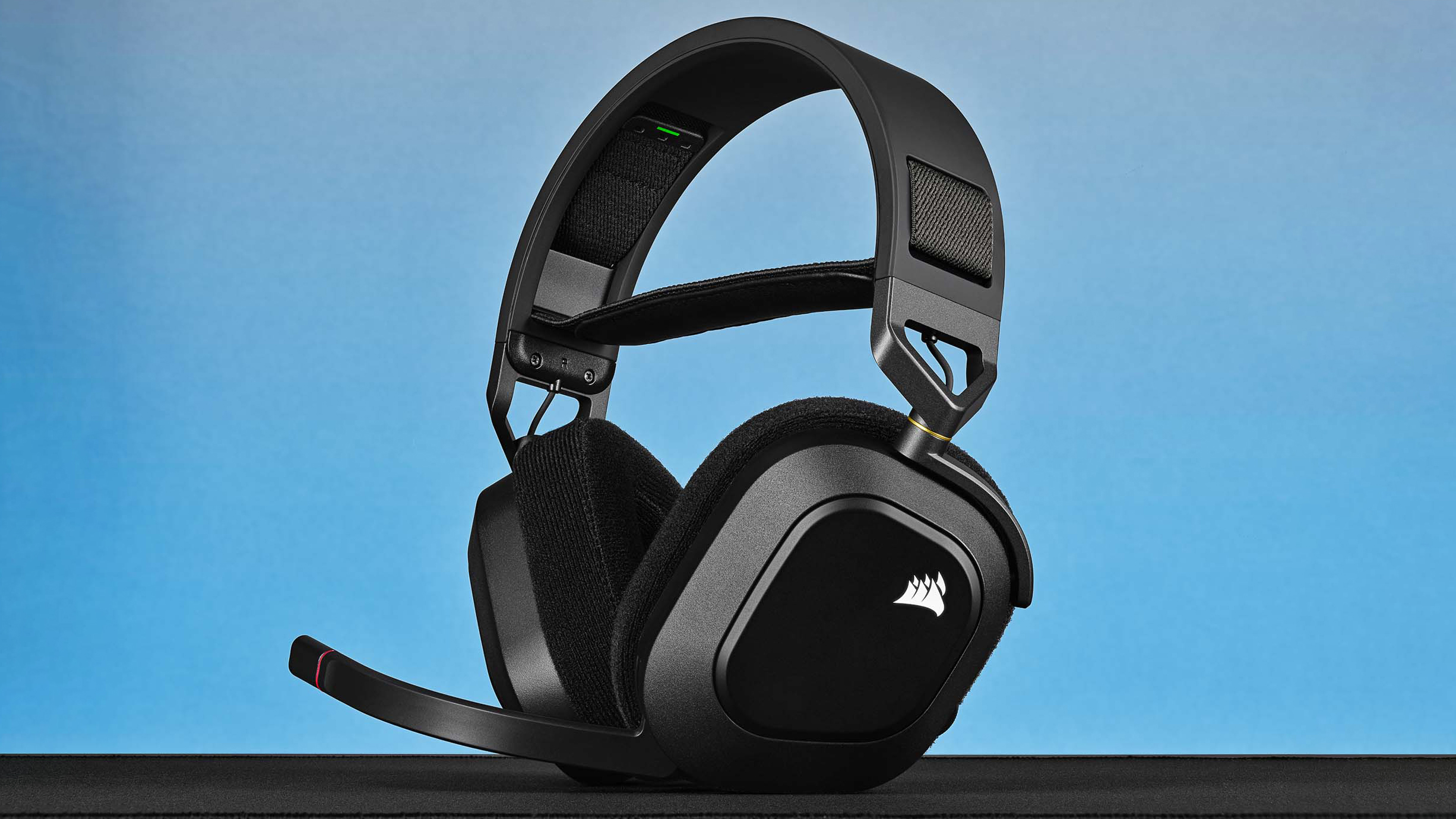
Compatibility: PC, Mac, PS5, PS4
Drivers: 50mm neodymium
Frequency Response: 20Hz - 40 kHz
Wireless: 2.4GHz Corsair Slipstream
I’ve tested many Corsair headsets over the years, and they’ve varied significantly in both design sensibilities and overall useability. As much as I like the Californian company’s overall aesthetic and respect its build quality, it isn’t until now that I’ve found a headset of theirs that I can happily use every day.
I think the HS80 RGB Wireless represents the culmination of everything Corsair’s learned along the way, since it first launched the HS1 in 2010.
Priced at $149 / £140, the HS80 RGB Wireless is well up in premium territory, but it’s proven comfortable, stylish and dependable over the twelve months I’ve used mine.
The more affordable models in Corsair’s HS range use a totally different frame design to this model, and to each other. The HS35s use rounded ear cups and a straightforward headband design reminiscent of Razer’s chunky silhouettes, while the HS50 mounts the elongated rounded ear cups on an aluminum hinge and looks close to the HyperX Cloud. Both are capable headsets, but they carry the sense that Corsair hadn’t truly nailed a headset design yet.
This HS80 is the moment Corsair nailed it, drawing obvious inspiration from its VOID headset line, but refining it for comfort and added adjustment, and then including an Arctis-style headband design for good measure.
So read on and I’ll tell you why I haven’t strayed from the HS80 for a year now – and why it could be you next wireless gaming headset.
Large and in charge
Why you can trust Tom's Guide
An elasticated strap runs inside the aluminum headband of the Corsair HS80 RGB Wireless, pulled tight by velcro fasteners so that when you wear it, only the cushioned elastic band itself sits on your head. The weight of the headset and the hard surface of the band are suspended above you.
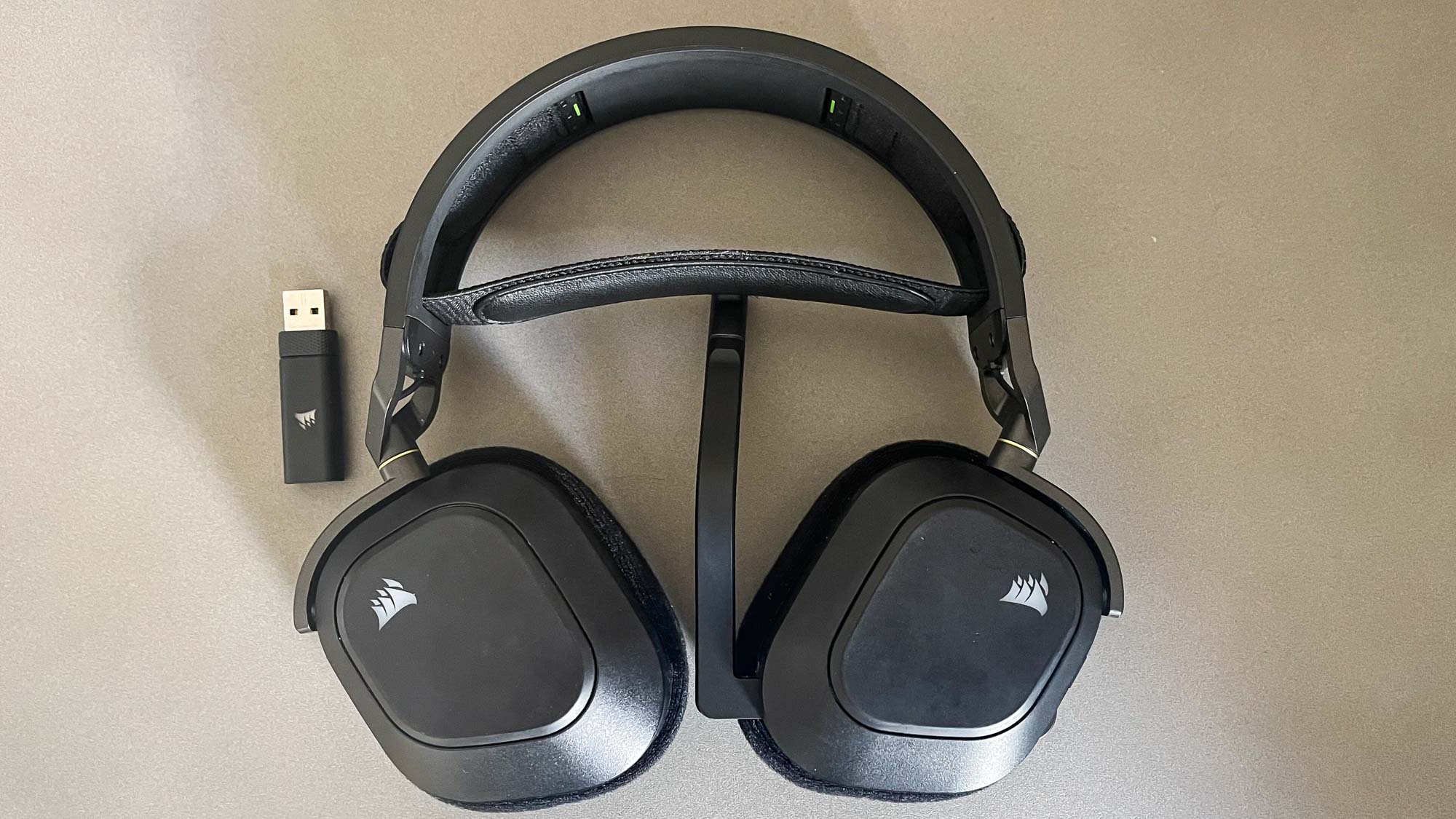
We all know how comfortable that design is because SteelSeries has been using it on its Arctis headset lines for the past six years. But Corsair’s own version of a suspended headband has been adapted to work well with the HS80. The padded cushion on the inner surface of the elastic band is soft and durable and unlike Arctis cans, the band stays taut long-term, no sagging here.
The ear cups themselves are an irregular square shape similar to the VOIDs in that they’re mounted via a reversed hinge running from the top-rear to the center-top of each ear cup. Not only does that create a stylish line, it means you can fold the headset out flat for easier transport or storage. Not being an esports pro myself, I don’t find myself having to pack this headset away en route to tournaments, but laying it out flat makes it handy to stow away when not in use.
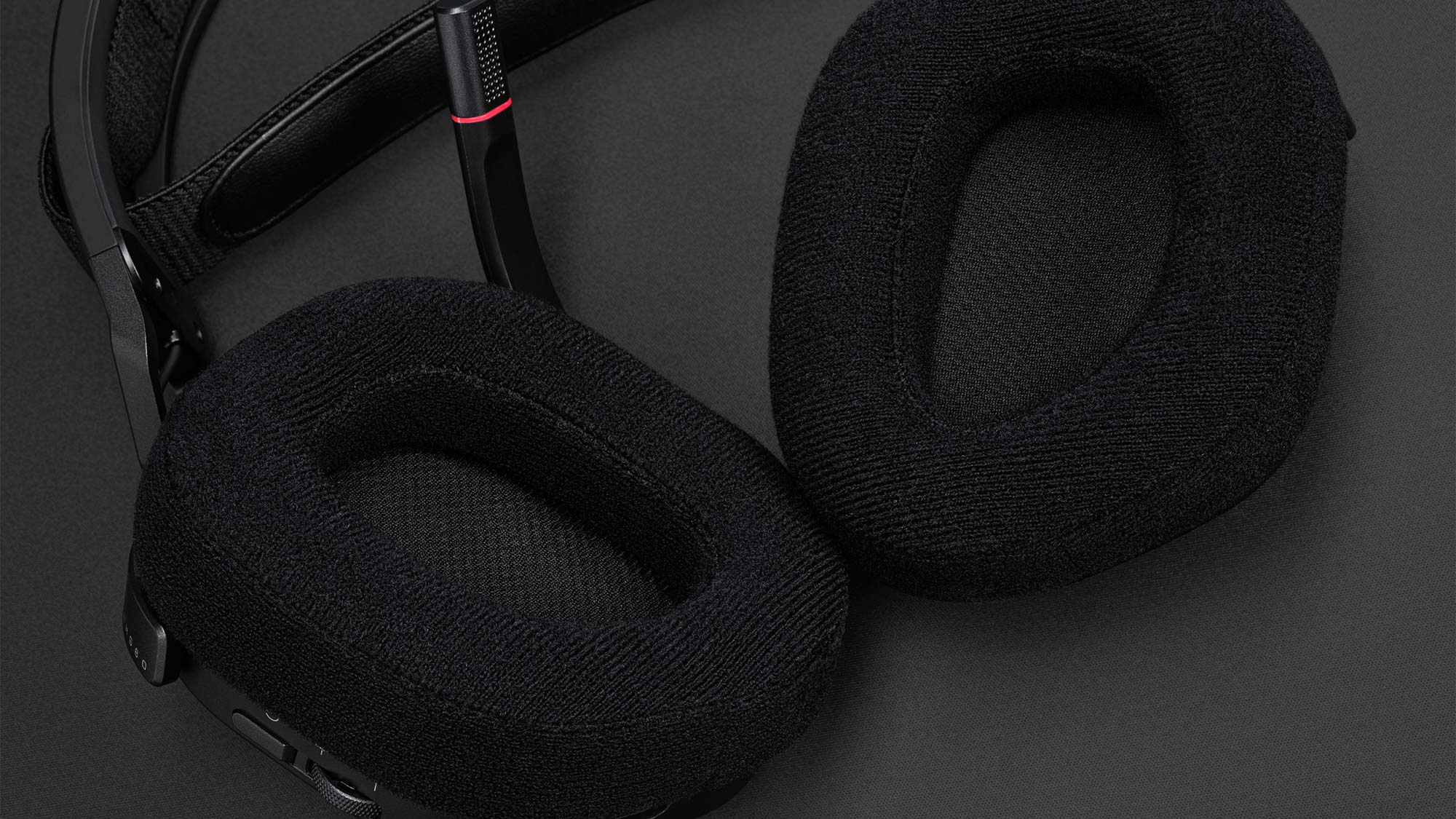
Those hinges are also nearly silent and offer a nice amount of adjustability. Coupled with the elastic band, they ensure you should find a snug and comfy fit without the need to note down the exact positions of notches on the headband, as is the case elsewhere. The band stays comfortable for hours at a time too.
At 376g, the HS80 aren’t the lightest headphones, but the design counteracts the weight. I often forget I’m wearing them. And after many months, I’ve never felt them digging in — there’s simply no contact point that isn’t light and cushioned. This is a real strength, and sometimes we forgo it for what looks cool or promises ear-blasting sound.
Like bass? You’ll love these
Speaking of sound, the ear cups surround 50mm neodymium drivers, and they’re cushioned by generously proportioned fabric pads that, like the rest of the headset, have held up well to heavy daily use over a long period.
The combination of driver size, driver tuning and cushioning material choice is something of a holy trinity in gaming headset design; these are the three biggest contributors to the audio characteristics, particularly in closed-back designs like this one where the cushioned pad forms a resonance chamber around your ear where bass frequencies ring out. Open-backed designs let those frequencies roam free by contrast.
That means the fabric pads offer a happy medium of clarity and bass response. Generally speaking, leather-style cushion pads create a tighter seal to the skin and allow low-end to really fill the space, creating that thumping, haptic bass response. But that often comes at the expense of detail higher up the frequencies, not to mention clammy ears.
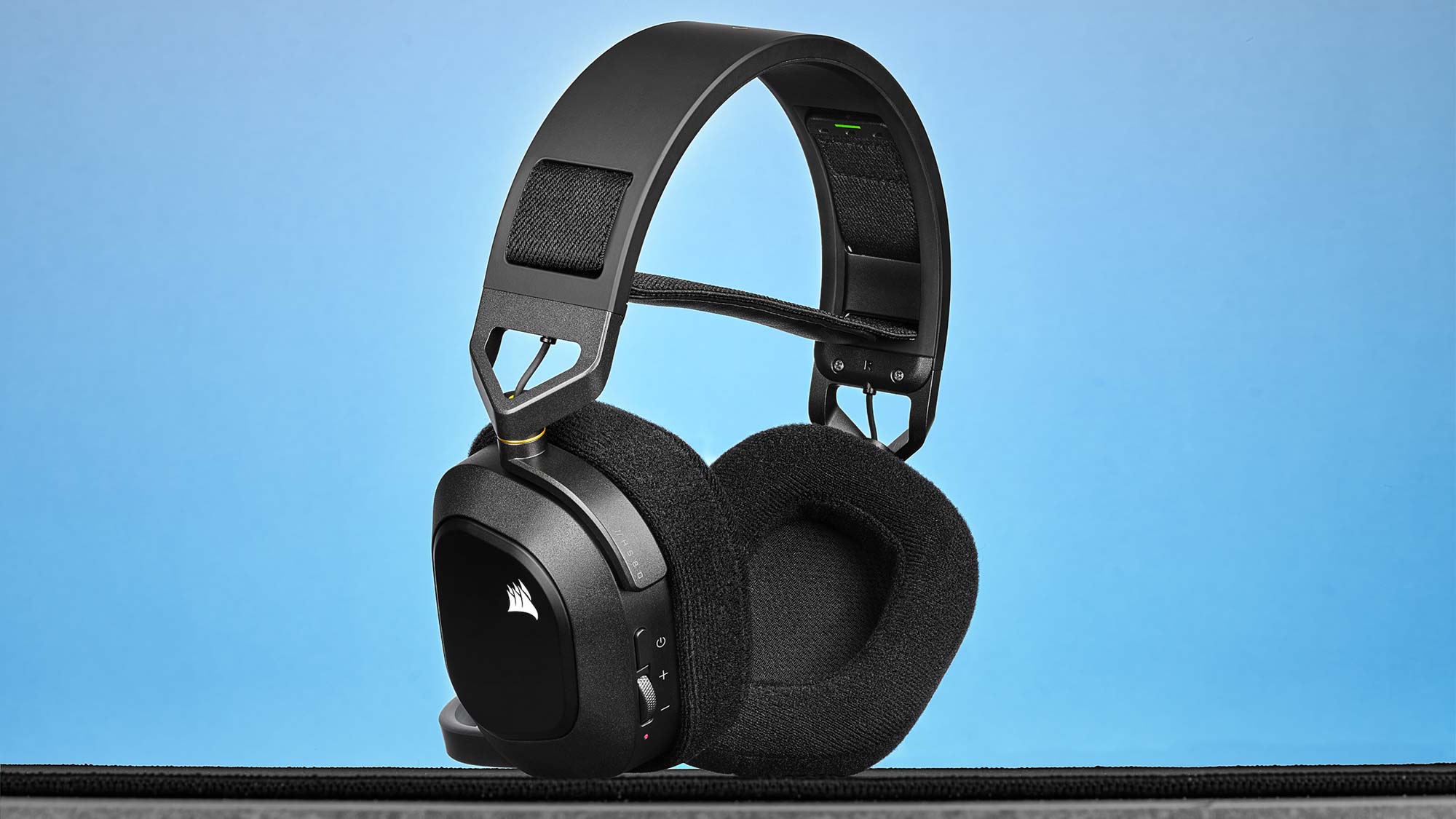
The soft cloth fabric used around the HS80 RGB Wireless’ ear cups allow more breathability, so you don’t get particularly thumping bass response from the 50mm drivers, but neither do they sound weak or tinny. Instead, they’re simply balanced, offering something closer to a studio-style flat response.
A note for audiophiles and home music producers though, by enthusiast headphone standards they’re still a long way away from a truly flat response. This is the gaming headset market — manufacturers have only recently learned not to shake our eardrums loose with over-emphasised bass at the cost of audio fidelity everywhere else.
The benefit of that more balanced sound is easier sound cue positioning in competitive games like PUBG: Battlegrounds. The headset isn’t trying to turn a gunfight into a Michael Bay scene, it’s just articulating the audio cues with decent accuracy using its stereo spread.
Dolby Atmos virtual surround is also compatible with the HS80 RGB Wireless via Corsair’s iCUE software. Personally I never use virtual surround due to the muddiness and the digital artifice it colors the whole soundscape with. If you feel otherwise though, it’s available to you with this headset.
When you’re out of games and listening to music or cinematic audio, the sound’s equally capable. There’s enough low-end heft to articulate basslines and percussion, and an airiness higher up in the trebles. Truthfully sound quality isn’t the HS80 RGB Wireless’ strongest asset and it falls slightly short for pure excitement to headsets like Audio-Technica’s similarly priced ATH-G1s. It isn’t the outright best headset on the market, but it is an all-rounder that works well enough in competitive games, cinematic solo experiences and music.
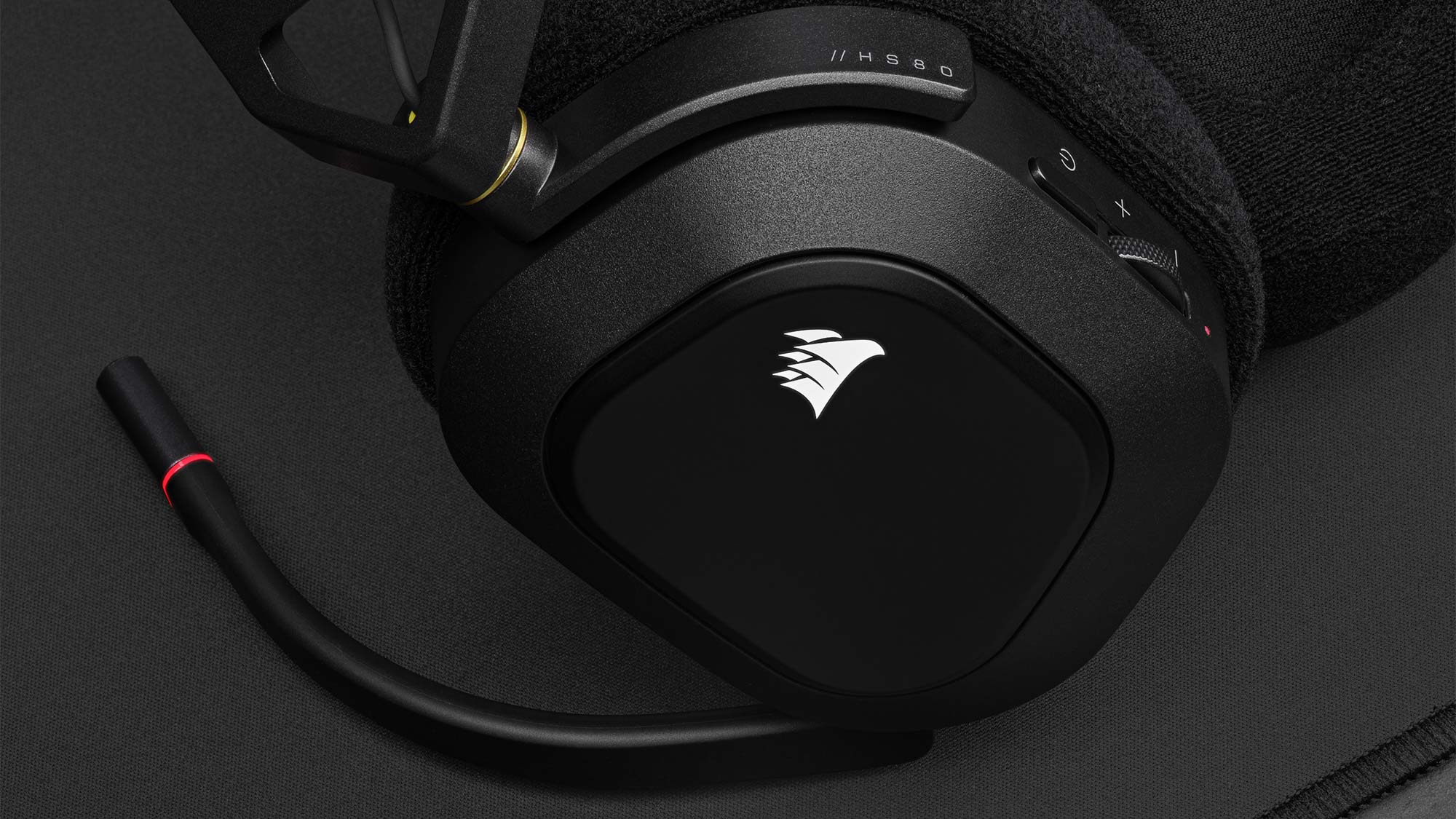
A quick word on the mic, too. Designed around a hinged arm, it’s a clear if slightly quiet microphone that cuts through game audio perfectly well, but your Discord buddies may need to boost your volume in order to balance you with other players using more powerful mics. Noise cancellation is effective though and there’s zero scratching or popping when adjusting the mic position.
A cinch to control
The controls here are minimal and simple — just a power button and a notched volume scroller. The mic auto-mutes when you push it out of the way on its hinge so there’s no need for a mute button. I like the simplicity, and there’s only one additional feature I wish was on this model — a chat mix scroller, as you’d find on a higher-end Arctis headset. SteelSeries has spoiled me with that extravagance, and now I miss it whenever it’s omitted from a headset design.
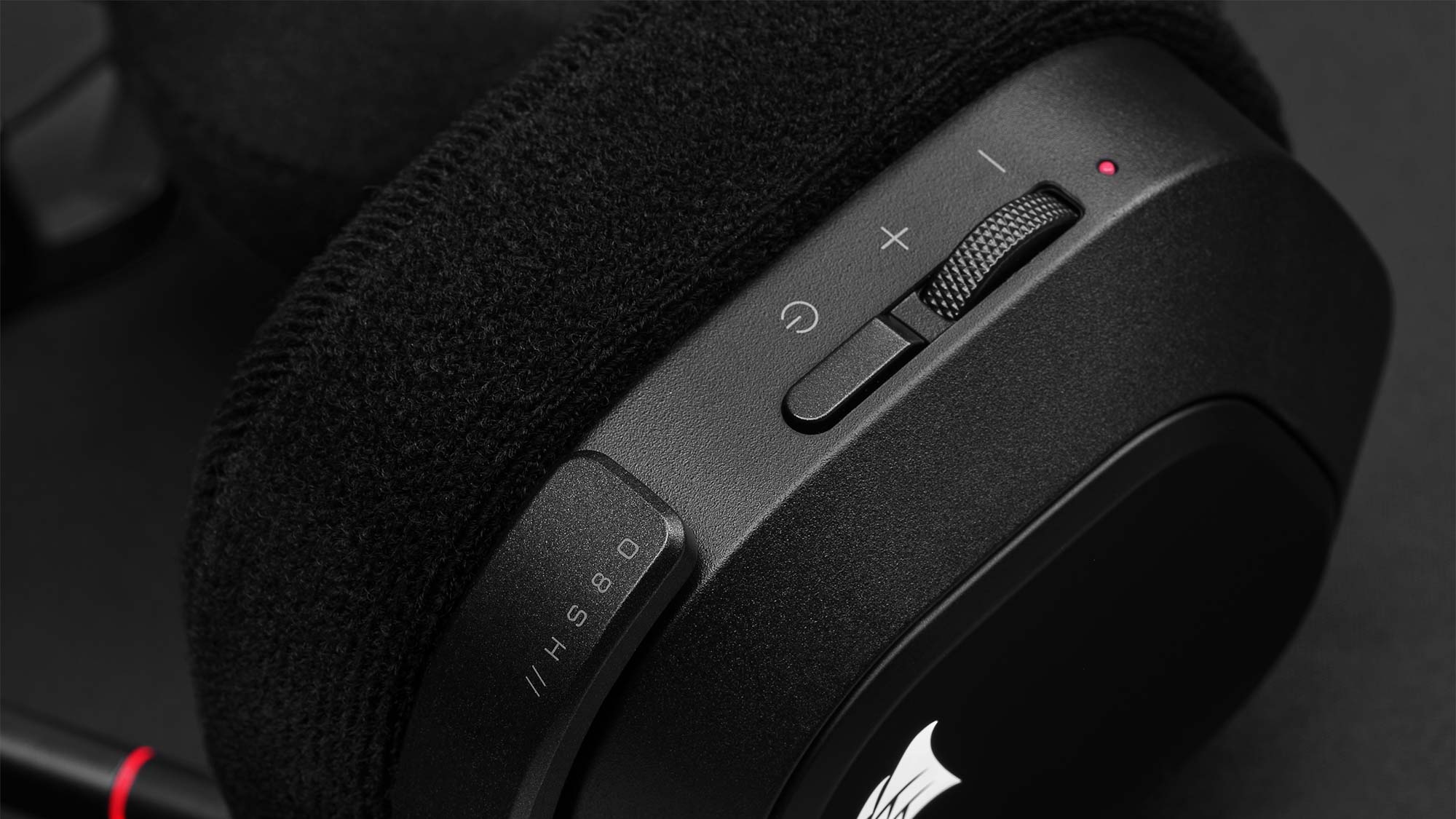
Looks are subjective, of course, but personally I’m a big fan of the subtle implementation of RGB on this model. The only lights here are a band around the mic to indicate its status and a backlit Corsair logo. The wireless dongle also features an RGB logo, so if coloured lights are your aesthetic there’s just about enough to keep you happy.
The matte finish of the plastic construction materials has kept the HS80s looking smart and fresh with minimal maintenance, and they don’t show fingerprints as easily as some rubberised matte finishes can. I’m extremely impressed by how close the headset looks to box fresh after so many months as my workhorse headset — that’s really testament to the quality of design and construction materials Corsair has put into this model.
Latency is kept low
The big feature here is wireless connectivity, achieved via Corsair’s Slipstream wireless tech. The claim on the spec sheet is 60ft of range. What that means in practical terms is there’s only one spot in my three-storey house where I experience any signal dropout when I use the HS80. Unfortunately it’s right by my fridge, but that’s not Corsair’s fault. It’s an impressively big signal range, and equally impressive that I’ve never to date had a moment’s signal loss while I play.
Latency is never noticeable either, in real terms. When I rev an engine Assetto Corsa Competizione using the wired and wireless connections one after the other, there is a fractional difference if I really listen out for it, but it’s far too minute to affect my driving. I’ll have to find another excuse for binning it into the gravel trap… faulty controller?
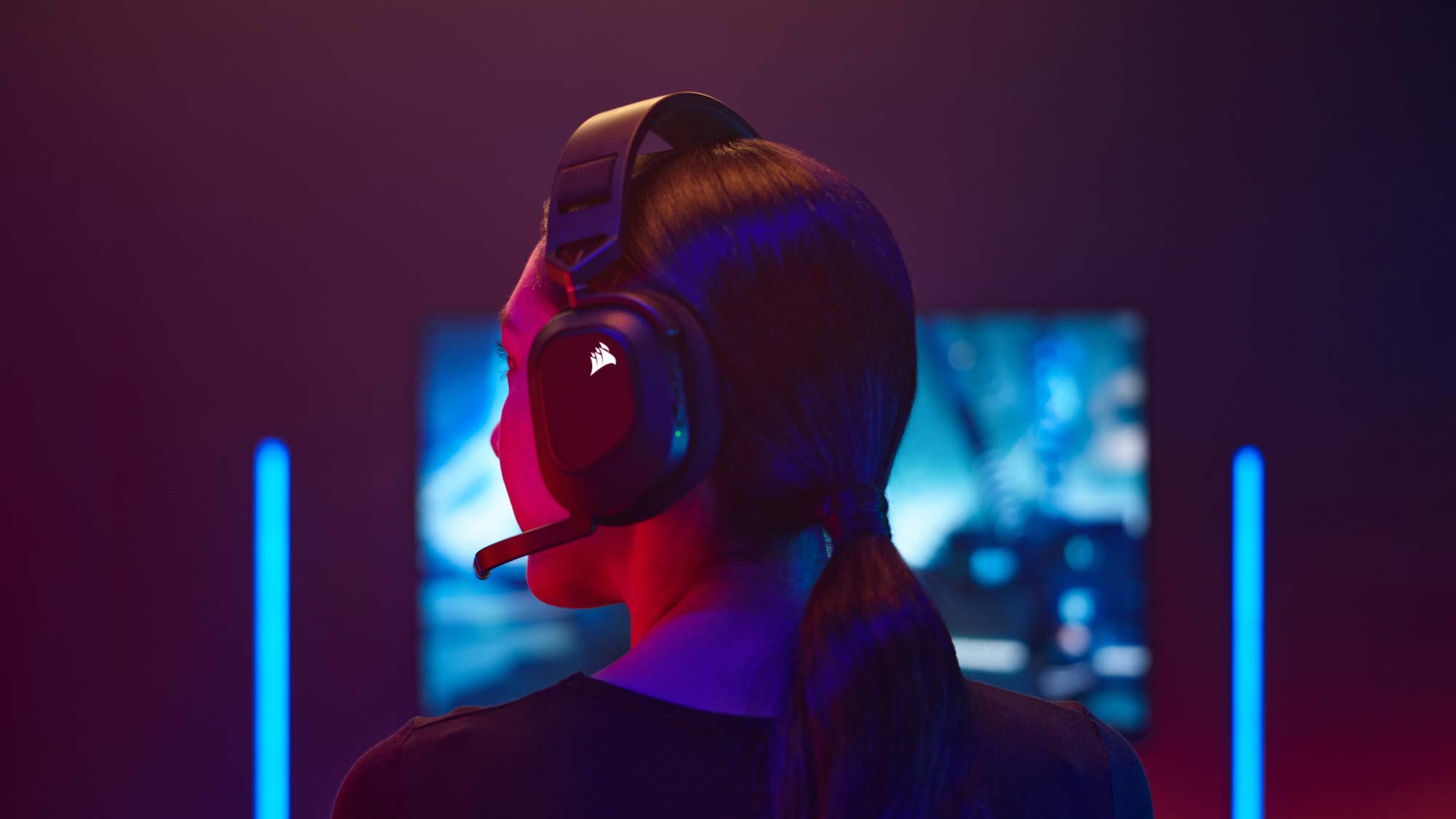
The Corsair HS80 RGB Wireless can produce 24-bit, 96KHz audio when it’s connected via the USB cable versus 24-bit, 48KHz sound wirelessly so in theory there should be an improvement in sound quality when you use a wired connection. In the real world, most of the sound we listen to is heavily compressed: YouTube videos, streaming audio, and even most game audio files feature some compression.
So that already subtle difference between 96KHz and 48KHz sample rates becomes a non-factor when you’re out in the wild, listening to low-bitrate sounds. In the end, that’s a good thing for the HS80, and you can depend on it to match the vast majority of audio sources’ fidelity.
Keep an eye on that battery life
While the wireless connection itself is strong and hassle-free, the battery life and charge time associated with going wireless is where this headset shows the chink in its armour.
Out of the box, Corsair states up to 20 hours of battery life and in my experience that was roughly accurate for the first few charges. But within a month it was only around seven to eight hours before the low battery bleeps started ringing in my ears, and I had to plug it in to charge. Several months down the road, it’s around six to seven hours.
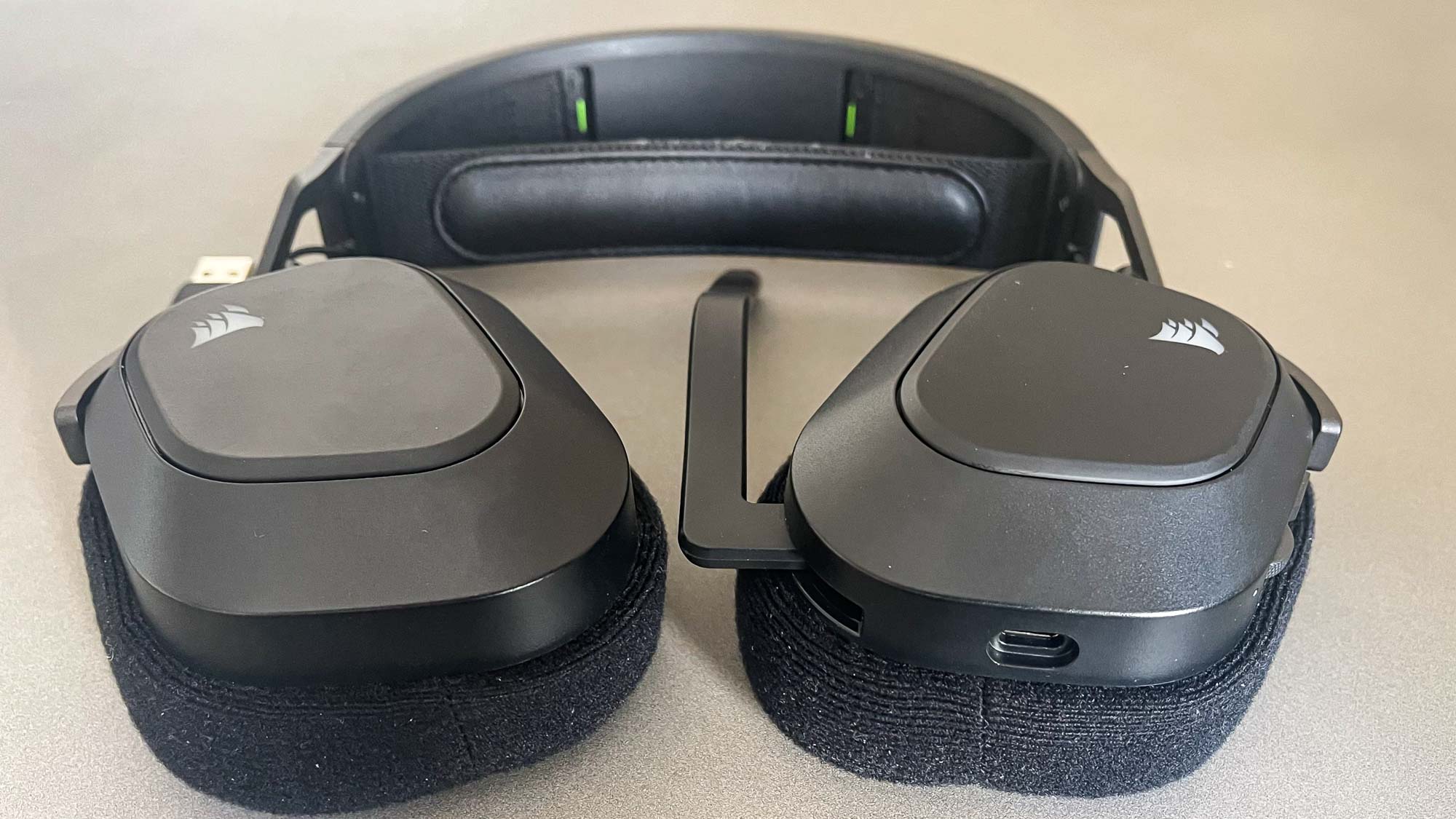
Charging is done via USB-C, so if you’re able to hook it up USB-C to USB-C you can bring it back to full charge in about three hours. But USB-C to USB-A takes longer and if that USB-A port isn’t a 3.0 version, it’s an hour or more longer.
The battery life and charge time don’t stack up too favorably to the competition from Logitech G, Steelseries or Razer, but at least you can use the headset uninterrupted while it’s connected and charging.
My favorite — warts and all
Corsair’s got the most important features right on this model, and that’s kept it over my years for a long time now. The HS80 RGB Wireless makes a great first impression with its looks, comfort and sound.
But It’s revealed itself to be a great all-rounder over the long-term, and leaves an even better lasting impression thanks to the durability of its construction. It’s still as comfortable after a year of heavy daily use as it was out of the box, and it still looks great.
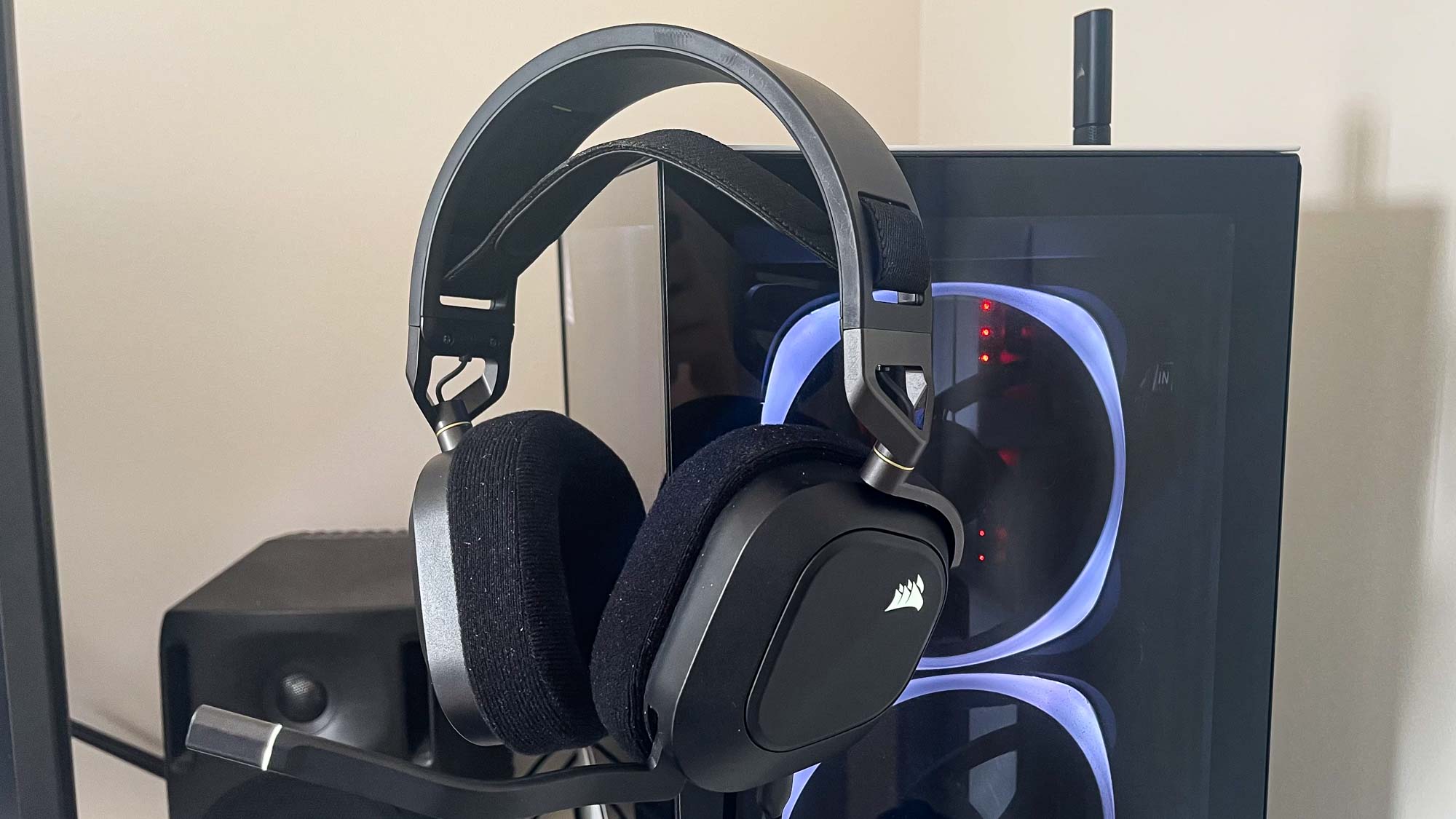
The battery life has dropped off, though, and it isn’t the quickest to recharge on the market. That represents only a minor inconvenience since it functions perfectly via a wired connection with theoretically higher audio fidelity levels. It’s the only minor grievance I have about an otherwise exemplary wireless headset.
Sign up to get the BEST of Tom's Guide direct to your inbox.
Get instant access to breaking news, the hottest reviews, great deals and helpful tips.
Phil Iwaniuk used to work in magazines. Now he wanders the earth, stopping passers-by to tell them about PC games he remembers from 1998 until their polite smiles turn cold. He also makes ads. Veteran hardware smasher and game botherer of PC Format, Official PlayStation Magazine, PCGamesN, Guardian, Eurogamer, IGN, VG247, PCGamer, Tom's Guide and What Gramophone? He won an award once, but he doesn't like to go on about it.
-
jennifur_vultee Reply
I love the Corsair HS80 for the sound quality but...admin said:12 months in, this Corsair headset is still my daily driver. Here’s why.
I've been using Corsair's HS80 gaming headset for a year — here’s why it’s my everyday choice : Read more
I live in Texas and even with air conditioning it gets hot, you sweat. I've tried cleaning the cloth ear cups by wiping them off periodically then because after while they start to smell I washed them in mild soapy water and the cloth almost immediately started coming loose because its just glued to the plastic clip ring. After they dried they still smell so I bought a second set with a new headband from Corsair after owning the headset for just 5 months. I rewashed the first set, put the new set on and in a few months they were going the same way.
Great headset for sound quality but the ear cups are cheap, fall apart when washed and start to smell after a few months use.

